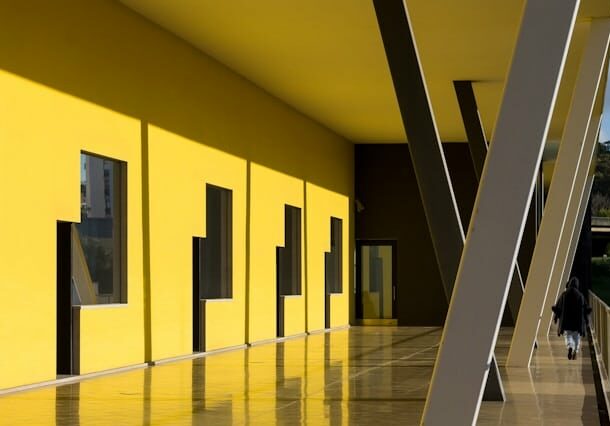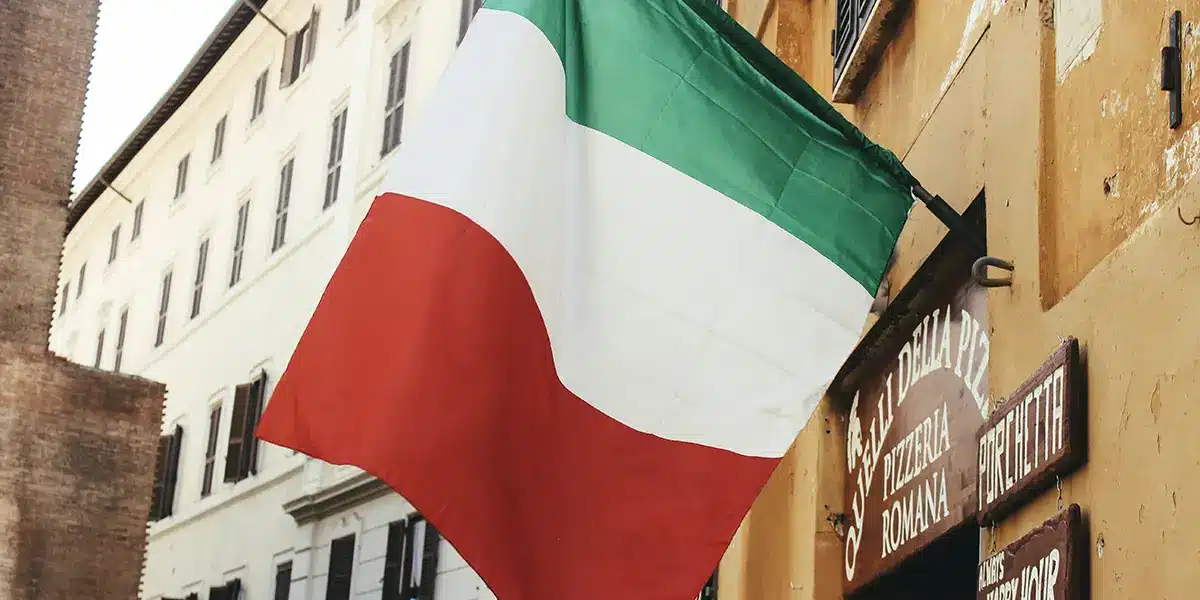The education in Italy consists of different stages that guide students from early childhood to university. Children usually begin with preprimary education, then move on to primary school, lower secondary school, and finally upper secondary school. Education is compulsory from age 6 to 16, and all children must attend school during these years. Most students attend public schools, which are free and open to everyone in Italy.
This article will explain how the education system in Italy works. It will cover everything from pre-primary and primary school to secondary and university education. Here is what to expect:
- Overview of the Education System in Italy
- Pre-primary Education in Italy (Scuola dell’infanzia)
- Public vs Private Schools in Italy: What’s the difference?
- Primary School Education (Scuola Primaria)
- Upper Secondary School (Scuola secondaria di secondo grado)
- Technical and Professional Institutes in Italy
- Support for Children With Special Needs
- Cost of Education in Italy
- Tertiary Education in Italy
- Top Five Universities in Italy
- Scholarships for International Students in Italy
- Italy Scholarships for international students: Application process
- Admission Requirements for International Students
Overview of the Education System in Italy
 The education system in Italy is divided into five main stages: preschool (scuola dell’infanzia), primary school (scuola primaria), lower secondary school (scuola secondaria di primo grado), upper secondary school (scuola secondaria di secondo grado), and university (università).
The education system in Italy is divided into five main stages: preschool (scuola dell’infanzia), primary school (scuola primaria), lower secondary school (scuola secondaria di primo grado), upper secondary school (scuola secondaria di secondo grado), and university (università).
Children in Italy must go to school from age 6 to 16. This includes primary school, lower secondary school, and the first two years of upper secondary school. Public schools are free for everyone who lives in Italy, including foreigners. The government makes sure that all schools follow the same rules and quality standards.
After finishing upper secondary school, students can continue their education at universities, technical schools, or professional training programs. The system focuses on learning and offers different options to match students’ interests and career plans.
Level |
Age |
Duration |
Description |
|
Pre-primary (Scuola dell’infanzia) |
3–6 |
3 years |
Optional, focuses on play and early social skills. |
|
Primary (Scuola primaria) |
6–11 |
5 years |
Compulsory; core subjects include Italian, math, science, history, and a foreign language (often English). |
|
Lower Secondary (Scuola secondaria di primo grado) |
11-14 |
3 years |
Compulsory; academic and vocational orientation begins. Ends with an exam (Esame di Terza Media). |
|
Upper Secondary (Scuola secondaria di secondo grado) |
14-19 |
5 years |
Offers different types of schools: liceo (academic), tecnico (technical), and professionale (vocational). Ends with the Maturità exam, required for university entry. |
|
Higher Education |
19+ |
Varies |
Includes universities and technical institutes. Based on the Bologna Process (Bachelor-Master-PhD). |
Grading system in Italy
In Italian schools, grades are given on a 10-point scale, where 6 is the minimum passing grade. This system is used in both primary and secondary education.
Scale Grade |
Description |
|
9 – 10 |
Ottimo (Excellent) |
|
8 – 8.99 |
Distinto (Very Good) |
|
7 – 7.99 |
Buono (Good) |
|
6 – 6.99 |
Sufficiente (Sufficient) |
|
0 – 5.99 |
Respinto (Fail) |
Pre-primary Education in Italy (Scuola dell’infanzia)
 Preschool education in Italy is not mandatory. However, many parents put their children in pre-primary school so they can return to work. Here, early childhood education is the main objective.
Preschool education in Italy is not mandatory. However, many parents put their children in pre-primary school so they can return to work. Here, early childhood education is the main objective.
The Italian government subsidizes many preschools, offering Italian residents a cost-effective option. However, the cost may vary depending on the region. For example, regions in northern Italy, like Bologna, Venice, and Verona, may charge more for the same service compared to regions in the south. Generally, the cost of preschool in Italy is dependent on a family’s financial situation.
Expats in Italy may choose to place their children in private schools as English is widely spoken. While Italian is spoken in public pre-primary in Italy.
Public vs Private Schools in Italy: What’s the difference?
Public schools in Italy are free and follow the national curriculum set by the Ministry of Education. They are open to all children, including foreigners, and are generally secular. Private schools, on the other hand, charge tuition and can have a religious affiliation or offer alternative teaching methods like Montessori or Steiner. While both types of schools follow the national curriculum, private schools often have smaller class sizes, more flexibility in teaching, and offer more extracurricular activities. Some private schools, called paritarie, are officially recognized by the state and follow the same academic standards as public schools.
Primary School Education (Scuola Primaria)
Italy’s primary schools are for students between the ages of 6 and 11 and are equivalent to elementary school in America. A primary school education is mandatory for all children in Italy, regardless of economic or immigration status. Primary school lasts five years and focuses on core subjects such as Italian, mathematics, science, and social studies.
Public primary schools
Public schools in Italy are free, and primary school teachers provide a well-rounded education in Italian. Classes generally last 24-40 hours per week, with school from Monday to Friday. However, many schools also have short days on Saturdays, which may make school times during the week shorter.
Private primary schools
There is also a range of private primary schools in Italy. Most expat families moving to Italy choose private international schools to provide their children with the same education as back home. Private schools in Italy can cost between €4,000- €27,000 per year and offer smaller classes than the public school system.
Independent primary schools in Italy provide different learning methods to match each child’s needs. Some focus on religion, creativity, independence, or learning as a community.
Category of School |
Description |
|
Religious |
These schools are mostly Catholic but can also be Muslim, Jewish, or Buddhist. They combine religious teachings with a standard academic curriculum. |
|
Montessori |
Children learn at their own pace through hands-on activities. The focus is on independence, personal development, and critical thinking. |
|
Steiner Waldorf |
Uses a creative, artistic approach to nurture the whole child mind, body, and spirit through music, storytelling, nature, and strong teacher bonds. |
|
Senza Zaino (Without a Backpack) |
Encourages learning through shared class resources instead of personal backpacks. Promotes independence, responsibility, and a sense of community. |
Upper Secondary School (Scuola secondaria di secondo grado)
 The upper secondary education system in Italy is equivalent to US high schools. The first two years are mandatory (until age 16), and further schooling is not compulsory after this.
The upper secondary education system in Italy is equivalent to US high schools. The first two years are mandatory (until age 16), and further schooling is not compulsory after this.
Italy’s upper secondary education differs from other education systems because students must choose a specialty after the first two years. This can include interests such as:
- Language
- Science
- Visual arts/fine arts
- Business and technology
- Physical education and applied sciences
The most important part of the upper secondary education system is the state exam (Esame di Stato), also known as Maturità. Regardless of the type of institution, students must pass this exam to apply for university education or pursue their career after five years.
Public upper secondary school
As mentioned, secondary students can choose from different educational streams based on their interests, strengths, and future career or university goals. These routes help prepare students for higher education or to enter the workforce with specialized skills:
Educational Stream |
Description |
|
Lyceums (Liceo) |
Academically focused schools that offer specialized tracks such as classical studies, science, foreign languages, or the arts. Graduates can continue to university. |
|
Technical Institutes (Istituto Tecnico) |
Combine theoretical knowledge with practical skills. Specializations may include IT, engineering, and business. Internships are common in the final year. |
|
Artistic Institutes (Istituto d’Arte) |
Three-year programs that prepare students for creative careers in fields such as visual arts, design, and craftsmanship. |
|
Teacher Training Programs (Istituto Magistrale) |
Five-year programs designed for students who want to become primary school teachers. These include both academic and practical training. |
|
Vocational Programs (Istituto Professionale) |
Offer hands-on training in specific job sectors like agriculture, hospitality, or social services. Duration ranges from 3 to 5 years, with many students entering the workforce directly after graduation. |
Private upper secondary school
Private schools at the upper secondary school level in Italy aren’t popular among Italian students, but may be a good option for expat families. However, it’s important to note that the institutions still break away by subject choice regardless of the school. Here are some of the private upper secondary school options in Italy:
- Boarding schools: Generally, lessons are taught in English for international students and come with a hefty price tag.
- International schools are the most popular option for expat families. Lessons are taught in both English and Italian.
- Religious schools: Most religious schools in Italy are Catholic. There is a general focus on religious study throughout primary and high school.
Technical and Professional Institutes in Italy
Technical and Professional Institutes in Italy are part of the upper secondary school system and are designed to prepare students for the workforce and further education. Technical Institutes (Istituti Tecnici) have a mix of academic subjects and technical training, with specializations in information technology, business, tourism, and engineering. These programs last five years and often include internships during the final year to give students real-world experience.
Both types of schools are closely linked to the regional vocational training system, which supports the transition from education to employment. They provide students with a diploma that can be used to apply to a university or start a career.
Support for Children With Special Needs
Italy has an inclusive education system that does not discriminate against any child. There are no specialized schools for children with learning difficulties or disabilities. Rather, the public school works directly with the Ministry of Education to put a personal education plan in place on a child-by-child basis.
This inclusion ensures there is no discrimination and that every child is catered to with personalized learning goals in place. There are some private and international schools that offer an adaptive education with supportive staff in class to aid the child individually.
Cost of Education in Italy
Here is a look at the costs of education in Italy:
Education Level |
Type |
Average Cost Per Year |
|
Preschool |
Public |
Free or minimal fees (up to €100-€200 per year) |
|
Private |
€2,500 – €8,000 | |
|
Elementary School |
Public |
Free (small fees for materials and trips) |
|
Private |
€3,000 – €10,000 | |
|
Middle School |
Public |
Free (small fees for materials and activities) |
|
Private |
€4,000 – €15,000 | |
|
High School |
Public |
Free (small fees for exams and materials) |
|
Private |
€5,000 – €20,000 |
Scholarships and financial aid
Public education in Italy is free. However, with the rising cost of living, some families may find it difficult to afford school supplies and textbooks. For this reason, the Italian government has created a range of programs to aid lower-income families with schooling costs.
Specific regional programs help families with textbooks, transport, meals, and any other related schooling costs. If you’re looking for scholarships, private international schools in Italy offer a range of scholarship programs for both locals and international students.
Tertiary Education in Italy
Tertiary education in Italy includes universities, higher education institutes, and technical schools. It follows the Bologna Process and is divided into three levels:
- Laurea (Bachelor’s degree, 3 years)
- Laurea Magistrale (Master’s degree, 2 years)
- Dottorato di Ricerca (Doctorate)
Most universities in Italy are public and offer low tuition fees, especially for EU students. Private universities are also available and may provide more international programs. In addition to academic degrees, Italian higher technical institutes (ITS) focus on practical training in areas like technology, tourism, and design. Many universities now offer programs in English, especially at the graduate level.
Therefore, studying in Italy as an international student offers several key advantages. Public universities have affordable tuition fees, often much lower than in other European countries or the US.
Top Five Universities in Italy
Italy has some of the world’s best universities, known especially for excellence in arts, design, engineering, and humanities. These institutions are recognized not only for their fantastic education but also for their sheer history, which every international student living in Italy can appreciate.
Global Intelligence Unit’s Global Education Report outlines Europe as a leader in global higher education, praised for its strong academic infrastructure, innovation, and international reputation. According to the report, Italy ranks 11th. It stands out as a top destination for international students, offering world-renowned universities, rich cultural heritage, and a high quality of life. Not to forget that the cost of living in Italy is lower than in many other European countries.
Here are some of the top five universities in Italy for international students:
Rank |
University Name |
Location |
Strengths |
|
1 |
University of Bologna |
Bologna |
Oldest university, strong in humanities and sciences |
|
2 |
Sapienza University of Rome |
Rome |
Large research university, strong in engineering and medicine |
|
3 |
University of Milan |
Milan |
Renowned for medicine, economics, and law |
|
4 |
Polytechnic University of Milan |
Milan |
Top technical university, engineering and architecture |
|
5 |
University of Padua |
Padua |
Strong in medicine, science, and law |
Scholarships for International Students in Italy
International students are in luck. There are several scholarships for international students in Italy. Here are some of the top ways to get scholarships to study in Italy:
- Government: The Italian Government offers scholarships to foreign students. They are available for various levels of education and generally cover tuition fees, cost of living, and health insurance.
- Private scholarships: You can apply for university-specific scholarships. These are generally based on your educational merit and financial circumstances. Private universities may waive all or partial tuition fees.
A range of Italian scholarship programs is available depending on your needs and what you aim to achieve. Your best chance to explore the options is to look at online forums for real-life examples to see how previous students have gone about acquiring a scholarship in Italy.
Tips for obtaining a scholarship in Italy
- Scholarships in Italy are highly competitive and prestigious, so your application needs to stand out.
- Good grades are important, but letters of recommendation and your statement of purpose can be even more influential.
- Explain clearly why studying in Italy will benefit you, the university, and possibly Italy itself.
- Show your passion for your field and confidence in your ability to make a meaningful impact.
- Start early, gather your documents, and give yourself enough time to prepare a strong, complete application
Italy Scholarships for international students: Application process
The application process for scholarships in Italy may differ slightly based on where you are applying; however, here are the basics:
- Step one: Research opportunities to ensure you are applying for the best scholarship for your needs and achievements.
- Step two: Prepare the required documents, ensuring everything is included. This usually includes academic transcripts, proof of financial need, letters of recommendation, a resume, a statement of purpose, and language proficiency tests.
- Step three: Apply to your chosen university. Most scholarship programs require a letter of acceptance before the application can proceed.
- Step four: Apply for the scholarship, ensuring all documents and applications are provided in full.
- Step five: You may need to attend interviews before you are accepted into the scholarship program.
- Step six: Once you have a scholarship, you must apply for the relevant Italian study visa.
Admission Requirements for International Students
 EU residents don’t require a special visa to study in Italy. However, if the course is longer than 90 days, you may be required to obtain an Italian Residence Permit.
EU residents don’t require a special visa to study in Italy. However, if the course is longer than 90 days, you may be required to obtain an Italian Residence Permit.
International students from outside the EU must obtain a Type D visa from the Italian consulate. This permits non-EU nationals to stay in Italy for longer than 90 days. To obtain the long-stay visa, the student must provide the following:
- Enrollment at a legitimate higher education institution
- Proof of accommodation
- Proof of funds (minimum of €467.65 per month)
- Proof of language proficiency in Italian or English (Depending on the course)
- Private health insurance
- Adequate financial means for repatriation if necessary
Applying for the Italian Type D Visa is quite straightforward for most international students. However, you must ensure that all documents and forms are provided in full to avoid any delays.
If you’re planning to stay in Italy after your studies, the Italian Golden Visa may just be the ideal option. This investor program offers a great opportunity for non-EU/EAA and non-Swiss nationals to obtain a residence permit with the possibility of an Italian passport after certain criteria are met.
How Can Global Citizen Solutions Help You?
Global Citizen Solutions is a boutique migration consultancy firm with years of experience delivering bespoke residence and citizenship by investment solutions for international families. With offices worldwide and an experienced, hands-on team, we have helped hundreds of clients worldwide acquire citizenship, residence visas, or homes while diversifying their portfolios with robust investments.
We guide you from start to finish, taking you beyond your citizenship or residency by investment application.

